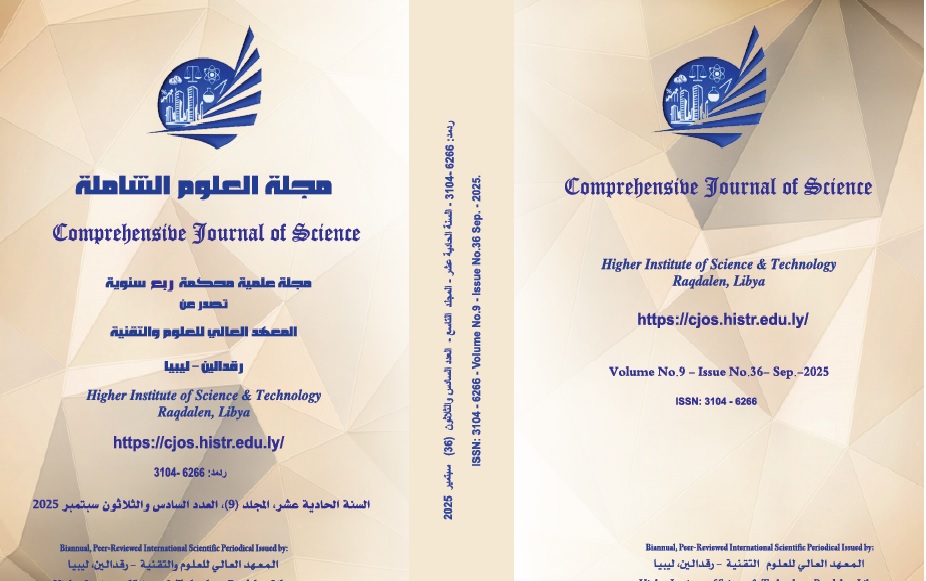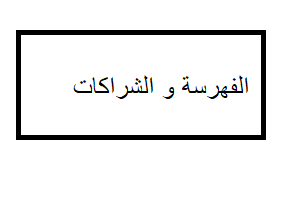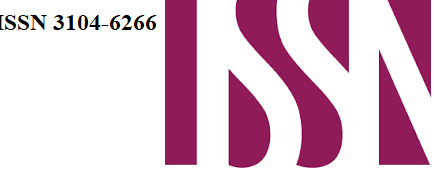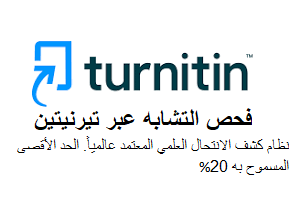Hyperbilirubinemia among Newborns Admitted to Sabratha Teaching Hospital: A Cross-Sectional Study
الكلمات المفتاحية:
البليروبين في الدم، البليروبين الكُلي، حديثي الولادة، فقر الدم، مستشفى صبراتة التعليميالملخص
فرط بيليروبين الدم هو حالة يكون فيها البيليروبين الزائد في الدم. البيليروبين هو منتج ثانوي داخلي غير قطبي لتقويض الهيم، حيث يتم تكسير 85% من كريات الدم الحمراء الطبيعية الهرمة و15% من تكون الكريات الحمر غير الفعالة أو دوران بروتينات الهيم غير الهيموجلوبين. عند الأطفال حديثي الولادة، يصبح فرط بيليروبين الدم واضحًا سريريًا على شكل يرقان عندما يصل إجمالي تركيز البيليروبين في المصل إلى -5 ملجم / ديسيلتر على عكس البالغين عند -2 ملجم / ديسيلتر. يؤدي تراكم البيليروبين في الجلد والأغشية المخاطية إلى تغير لون الجلد وصلبة العين إلى اللون الأصفر ويسبب التهابًا رأسيًا كاوديًا في المراحل المتقدمة. المواد والطرق: تهدف هذه الدراسة المقطعية في المستشفى إلى استكشاف نسبة البيليروبين في الدم بين الأطفال حديثي الولادة في صبراتة والكشف عن أعلى مستوى من البيليروبين تم تسجيله بين الأطفال حديثي الولادة. تم تضمين ما مجموعه 80 حديثي الولادة مع أمهاتهم واختيارهم بشكل ملائم. تم جمع البيانات من خلال مراجعة السجلات الطبية لحديثي الولادة باستخدام حزمة التحليل الاحصائي الاصدار الخاص. النتائج: متوسط قيمة البيليروبين الإجمالي للأطفال الذكور في اليوم الأول من دخول المستشفى كان 13.17 ± 0.62 ملغم / ديسيلتر. وهو مرتفع مقارنة بالقيم الطبيعية للبيليروبين الكلي عند الأطفال حديثي الولادة. بالنسبة للمواليد الإناث، كان متوسط قيمة البيليروبين الكلي في اليوم الأول من دخول المستشفى 13.11 ± 0.64 ملغم / ديسيلتر. وهذا يعني أنه لم يكن هناك اختلاف كبير بين القيمتين بالنسبة للذكور والإناث. لم يكن هناك فرق بين القيم في اليوم الأول والأخير من القبول لدى الذكور (0.51 ± 0.04 ملغم / ديسيلتر و 0.69 ± 0.06 ملغم / ديسيلتر). كان هناك ارتباط مرتفع إلى حد ما بين تركيز الهيموجلوبين وعدد خلايا الدم الحمراء. الاستنتاج: لقد حدثت ثورة في الوقاية من فرط بليروبين الدم وإدارته في القرن الماضي، مما أدى إلى تقليل الدرجة الكبيرة سابقًا من المراضة والوفيات بين الولدان إلى الحد الأدنى. أشارت الدراسة الحالية إلى ارتفاع معدل انتشار فرط بيليروبين الدم بين الأطفال حديثي الولادة الذين تم إدخالهم إلى مستشفى صبراتة التعليمي.
التنزيلات
المراجع
1. Burtis C, Bruns D. Tietz Fundamentals of Clinical Chemistry and Molecular Diagnostics. 7th ed. Elsevir, Amesterdam, 2015.
2. Verma Y. Neonatal jaundice. Yuva J Med Sci. 2015;1:36-45
3. Gartner, LM. Historical Review and Recent Advances in Neonatal and Perinatal Medicine. Evansville, IN: Mead Johnson Nutritional Division; 1980
4. Cremer RJ, Perryman PW, Richards DH. Influence of light on the hyperbilirubinemia of infants. Lancet. 1958;1:1094– 1097
5. Maisels MJ, Bhutani VK, Bogen D, Newman TB, Stark AR, Watchko JF. Hyperbilirubinemia in the newborn infant 35 weeks gestation: an update with clarifications. Pediatrics. 2009;124: 1193–1198
6. Johnson L, Bhutani VK, Karp K, Sivieri EM, Shapiro SM. Clinical report from the pilot USA kernicterus registry (1992 to 2004). J Perinatol. 2009;29:S25–S45
7. Dennery PA, Seidman DS, Stevenson DK. Neonatal hyperbilirubinemia. N Engl J Med. 2001;344:5
8. Mishra S, Agarwal R, Deorari AK, Paul VK (2008). Jaundice in the newborns. Indian J Pediatr, 75(2): 157-163.
9. Debra H, Yolanda Rivas. Jaundice: Newborn to Age 2 Months. Pediatrics in Review. 2017; Vol. 38 No. 11
10. Watchko JF, Maisels MJ. Jaundice in low birthweight infants: pathobiology and outcome. Arch Dis Child Fetal Neonatal Ed. 2003;88:F455–F458.
11. S. Chang, L. Wang, Y. Wang, I. D. Brouwer, F.J. Kok, and B. Lozoff, “Iron-deficiency anemia in infancy and social emotional development in preschool-aged chinese children,” Pediatrics, vol. 127, no. 4, pp. e927–e933, March 2011.
12. C.H. Lee, T. Hoang, S. Khan, and L. Ortiz, “Neonatal jaundice - its mathematical model and treatments,” Rose-Hulman Institute of Technology Undergraduate Math Journal, vol. 5, no. 1, pp. 1–16, 2004
13. S.D. Zucker, P.S. Horn, and K.E. Sherman, “Serum bilirubin levels in the US population: Gender effect and inverse correlation with colorectal cancer,” Hepatology, vol. 40, no. 4, pp. 827–835, October 2004.
14. M.J. Maisels, V.K. Bhutani, D. Bogen, T.B. Newman, A.R. Stark, and J.F. Watchko, “Hyperbilirubinemia in the newborn infant 35 weeks’ gestation: An update with clarifications,” Pediatrics, vol. 124, no. 4, October 2009.
15. Ebbesen F, Hansen T W, Maisels M J (2017): Update on Phototherapy in Jaundiced Neonates. Current Pediatric Reviews, 13, 176-180
16. Lamola AA. (2016): A pharmacologic view of phototherapy. Clinics in Perinatology, 43(2),259–276.
17. Murray NA, Roberts IA (2007). Haemolytic disease of the newborn. ADC Fetal Neonatal Ed, 92: 83-8.
18. Dennery PA (2002). Pharamacological interventions for the treatment of neonatal jaundice. Semin Neonatol, 7: 111-119.
19. Ree IMC, Smits-Wintjens VEHJ, van der Bom JG, et al. Neonatal management and outcome in alloimmune hemolytic disease. Expert Rev Hematol 2017; 10(7):607–16.
20. Wallerstein H. Treatment of severe erythroblastosis by simultaneous removal and replacement of blood of the newborn. Science 1946;103:583–4.
21. .Jeon H, Calhoun B, Pothiawala M, et al. Significant ABO hemolytic disease of the newborn in a group B infant with a group A2 mother. Immunohematology 2000;16(3):105–8.
22. Ennever JF (1990). Blue light, green light, white light, more light: treatment of neonatal jaundice. Clin Perinatol, 17:467–81
23. van Rossum HH, de Kraa N, Thomas M, et al. Comparison of the direct antiglobulin test and the eluate technique for diagnosing haemolytic disease of the newborn. Pract Lab Med 2015;3:17–22.
24. Haider M, Memon S, Tariq F, et al. Rhesus isoimmunization: late-onset hemolytic disease of the newborn without jaundice. Cureus 2020;12(1):e6559.
25. Padmanabhan A, Connelly-Smith L, Aqui N, et al. Guidelines on the use of therapeutic apheresis in clinical practice - evidence-based approach from the writing committee of the American society for apheresis: the eighth special issue. J Clin Apheresis 2019;34(3):171–354.
26. Bhutani VK, Stark AR, Lazzeroni LC. Initial clinical testing evaluation and risk assessment for universal screening for hyperbilirubinemia screening group. Predischarge screening for severe neonatal hyperbilirubinemia identifies infants who need phototherapy. J Pediatr 2013;162(3):477–82.
27. Slusher TM, Olusanya BO, Vreman HJ, et al. Treatment of neonatal jaundice with filtered sunlight in Nigerian neonates: study protocol of a non-inferiority, randomized controlled trial. Trial 2013;14:4.
28. Maisels MJ. Jaundice in a newborn: answers to questions about a common clinical problem. First of two parts. Contemp Pediatr. 2005;22(5)
29. Donel J. Bili blanket phototherapy. Int J Contemp Pediatr 2019;6(5):2231–4.
30. Wallerstein H. Treatment of severe erythroblastosis fetalis by simultaneous removal and replacement of the blood of the newborn infant. Science 1946; 103:583.
التنزيلات
منشور
إصدار
القسم
الرخصة

هذا العمل مرخص بموجب Creative Commons Attribution-NonCommercial-ShareAlike 4.0 International License.










